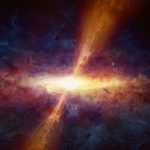Mars’s frequent dust storms are more than a visual phenomenon; they pose significant challenges for upcoming crewed missions. With NASA and China’s CMS planning manned expeditions, understanding the impact of Martian dust on human health is crucial. Recent studies reveal that prolonged exposure to fine dust could lead to severe respiratory issues for astronauts.
Research has expanded from mechanical concerns to direct health implications, uncovering a more complex risk profile associated with Martian dust. This deeper analysis highlights the urgent need for effective protective measures to ensure astronaut safety during extended missions.
Health Hazards from Martian Dust
Martian dust consists of fine particles like silica and iron oxide, which can severely irritate the respiratory system.
“There are many potential toxic elements that astronauts could be exposed to on Mars. Most critically, there is an abundance of silica dust in addition to iron dust from basalt and nanophase iron, both of which are reactive to the lungs and can cause respiratory diseases. What makes dust on Mars more hazardous is that the average dust particle size on Mars is much smaller than the minimum size that the mucus in our lungs is able to expel, so they’re more likely to cause disease.”
Dr. Justin L. Wang from USC emphasizes that these tiny particles pose a significant threat as they cannot be easily removed by the body’s natural defenses.
Historical Insights from Apollo Missions
Lessons from the Apollo era reveal that lunar dust can cling to spacesuits and equipment, leading to various health issues. Apollo astronauts reported symptoms like coughing and throat irritation upon returning to Earth. A 2005 NASA study concluded that the most significant health risks included vision obscuration and respiratory irritation caused by lunar regolith.
Mitigation Strategies for Astronaut Safety
To protect future astronauts, limiting dust contamination within habitats is essential.
“Limiting dust contamination of astronaut habitats and being able to filter out any dust that breaks through will be the most important countermeasure. Of course, some dust will be able to get through, especially when Martian dust storms make maintaining a clean environment more difficult. We’ve found studies that suggest vitamin C can help prevent diseases from chromium exposure and iodine can help prevent thyroid diseases from perchlorate.”
Additionally, technologies such as special sprays, electron beams, and protective coatings are being developed to manage dust infiltration effectively.
Ensuring medical self-sufficiency is also critical, given the extended transit times and inability to quickly return to Earth for treatment. Preventative measures, alongside careful management of nutritional supplements, are necessary to mitigate the health risks posed by Martian dust and the challenging environment of prolonged space missions.
Advancements in pharmacology and medical treatments will play a pivotal role in addressing the hazards of space exploration. As missions like NASA’s Artemis Program progress, continuous research and development of effective countermeasures will be essential to safeguard the health of astronauts venturing to Mars.










